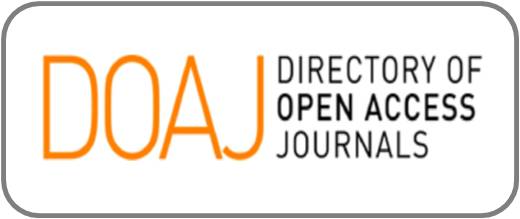Interrelationship of Food Wastage and Sustainable Development: A Review
DOI:
https://doi.org/10.47540/ijqr.v1i3.457Keywords:
Food Wastage, Resilience, Sustainable Development, Waste ManagementAbstract
This paper aims to examine the interrelationship of food consumption and designing a sustainable community. Japan has achieved its economic vestige through healthy economic development and technological opportunity, resource utilization, and the well-being of the community and citizens. Related to creating a sustainable community, it requires a coordinated joined approach involving a wide range of resources and stakeholders. To attain zero food waste community, resource mobilization is needed that promotes sustainable food consumption. Resource mobilization is the process of getting resources from resource providers, using different mechanisms, to implement the organization's work for achieving the pre-determined organizational goals. Technology is much needed to come up with efficient mechanization and technologies in preventing, reducing, and reutilizing food wastes. During the design process, it is essential to understand that having the same level of understanding should be established, in terms of common current issues.
References
Barbier, E. B., & Burgess, J. C. (2017). The Sustainable Development Goals and the systems approach to sustainability. Economics Discussion Papers, No 2017-28. Kiel Institute for the World Economy.
Conrad, E., & Cassar, L. F. (2014). Decoupling economic growth and environmental degradation: Reviewing progress to date in the small island state of Malta. Sustainability, 6 (10), 6729-6750.
Goldin, Claudia. (2014). Department of Economics Harvard University and National Bureau of Economic Research. Human Capital.
Grenny, J., Patterson, K., Maxfeld, D., McMillan, R. and Switzler, A. (2013), Infuencer: The New Science of Leading Change, McGraw Hill, New York, NY.
Jackson, T. (2005). Motivating sustainable consumption. London: Sustainable Development Research Network
Jacobs, H.E., & Bailey, J.S. (1982/3). Evaluating participation in a residential recycling program. Journal of Environmental Systems, 12 (2), 141-152.
Jansson, J. (2011). Consumer eco-innovation adoption: Assessing attitudinal factors and perceived product characteristics. Business Strategy and the Environment, 20 (3), 192-210.
Keeble, B. R. (1988). The Brundtland report: ‘Our common future’. Medicine and War, 4 (1), 17-25.
Kwon, D. B. (2009, October). Human capital and its measurement. The 3rd OECD World Forum on “Statistics, Knowledge and Policy” Charting Progress, Building Visions, Improving Life (pp. 27-30).
Mumovic, D., &Santamouris, M. (Eds.). (2013). A Handbook of Sustainable Building Design and Engineering: An Integrated Approach to Energy, Health and Operational Performance. Routledge.
Nijhuis, J. O. (2013). Consuming mobility. A practice approach to sustainable mobility transitions. (Ph.D.), Wageningen University, Wageningen.
Patel, S. S., Rogers, M. B., Amlôt, R., & Rubin, G. J. (2017). What Do We Mean by ‘Community Resilience’? A Systematic Literature Review of How It Is Defined in the Literature. PLOS Currents Disasters.
Perman, R. (2003). Natural resource and environmental economics. Pearson Education.
Spaargaren, G., & Van Vliet, B. (2000). Lifestyles, consumption and the environment: The ecological modernization of domestic consumption. Environmental Politics, 9 (1), 50-76.
Stern, P.C., Dietz, T., & Black, J.S. (1986). Support for environmental protection: The role of moral norms. Population & Environment, 8 (3), 204-222.
Tanoto, Anderson. (2018). Can South-East Asia met global sustainability goals? World Economic Forum.
Witmer, J.F., & Geller, E.S. (1976). Facilitating paper recycling: Effects of prompts, raffles, and contests. Journal of Applied Behavior Analysis, 9 (3), 315-322.
Published
How to Cite
Issue
Section
Copyright (c) 2022 Eric D. Bimmoy

This work is licensed under a Creative Commons Attribution-ShareAlike 4.0 International License.

















